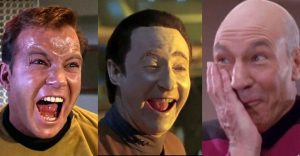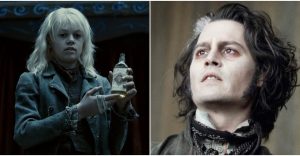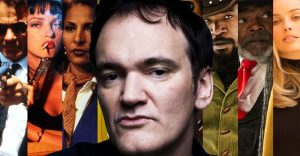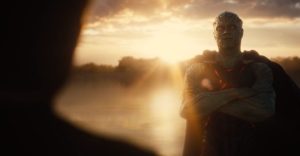The Crown Season 4 True Story: What Really Happened (& What Changed)?
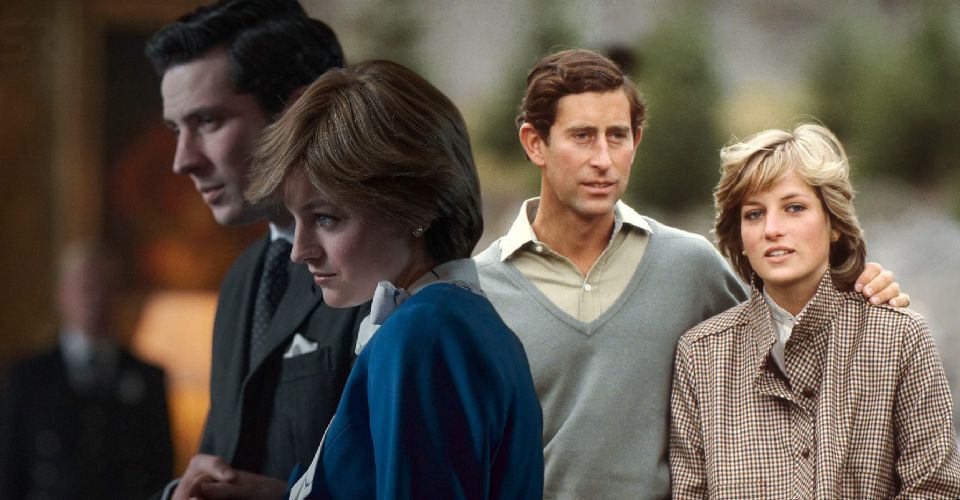
Warning: SPOILERS For The Crown season 4.
The Crown season 4 dramatizes the true story of the Royal House of Windsor and focuses on the marriage of Prince Charles (Josh O’Connor) and Princess Diana (Emma Corrin), as well as Margaret Thatcher’s (Gillian Anderson) tenure as Prime Minister. As impeccably researched, written, acted, and produced The Crown may be, the award-winning Netflix series is still a work of historical fiction and the true stories differ somewhat from what’s on-screen.
While The Crown season 4 continues to center on the reign of Queen Elizabeth II (Olivia Colman), the major characters from the previous seasons, Prince Philip (Tobias Menzies), Princess Margaret (Helena Bonham Carter), and Princess Anne (Erin Doherty) step back and cede center stage to Charles, Diana, and Margaret Thatcher. The personality clashes between the Queen and the Iron Lady take place from their private audiences at Buckingham Palace to the Windsors’ country castle, Balmoral. Meanwhile, the scandalous marriage between the Prince and Princess of Wales is something fans have been waiting for years to see, and The Crown doesn’t flinch as it delves into the sordid issues between them, which also involves Charles’ true paramour, Camilla Parker Bowles (Emerald Fennell).
The Crown season 4 also depicts key historical events such as the assassination of Lord Louis Mountbatten (Charles Dance), the Falkland War between Great Britain and Argentina, the infamous break-in of Buckingham Palace by Michael Fagan, and the rise and fall of Margaret Thatcher as Prime Minister. But in terms of The Crown’s true story, here’s what was fact and what was drama in The Crown season 4.
Mountbatten’s Assassination

The Crown season 4’s first episode, “Gold Stick”, depicts the real assassination of Lord Louis “Dickie” Mountbatten, the surrogate father to Princes Philip and Charles. The episode shows how Uncle Dickie was on his annual vacation at Classiebawn Castle near Northern Ireland on August 27, 1989, and he sailed on his boat, Shadow V, to catch lobster when the IRA remote detonated a bomb that killed Mountbatten and the others aboard. In real life, Dickie took his family on the boat as well but Patricia Knatchbull, Mountbatten’s daughter, survived the blast.
“Gold Stick” imagines a fateful final phone call between Charles and Uncle Dickie where the prince tore into Mountbatten about his frustrations over Dickie’s role in ensuring Camilla Shand broke off their relationship and married Andrew Parker-Bowles (Andrew Buchan), as seen in The Crown season 3. Mountbatten writes Charles a letter (one of a great many he sent the prince in real life) urging him once again to find a wife and act like the king he’s meant to be. The Crown also draws the throughline that Mountbatten’s assassination and funeral helped lead Charles to Diana, who told him she watched him give the eulogy for Dickie when they met again in 1980.
Charles And Diana’s Courtship, Wedding, And Camilla

“Gold Stick” imagines the first time Charles met Diana in 1977; he was dating Diana’s older sister Sarah Spencer (Isobel Eadie) and encountered 16-year-old Diana dressed as Puck from A Midsummer Night’s Dream. This encounter is fictional; in real life, Charles first met Diana at a grouse hunt at Althorp, the Spencer family’s home, in November 1977. But The Crown‘s version sets the tone, depicting young Diana as a sprightly troublemaker and invokes the famous dialogue from William Shakespeare’s play, “Lord, what fools these mortals be!”
After Mountbatten’s death, The Crown sets their second meeting outside Princess Anne’s (Erin Doherty) horseback riding competition in 1980 when, in real life, Charles and Diana met again when they were both invited to stay at Philip de Pass’s house in Sussex in November 1980. But they began dating despite the 13-year difference in their ages. Diana did meet the royal family when she stayed at Balmoral Castle and her debut was indeed “a triumph”, and, although Prince Philip did like her, The Crown invents an early morning stalking expedition between Philip and Diana to hammer home that being two outsiders to the Windsors is something they have in common, which pays off in the season finale.
Charles proposed to Diana in February 1981 at Windsor Castle and the future Princess of Wales did move from her flat to Clarence House where she began “princess training”. The Crown unflinchingly depicts Diana’s bulimia, which she battled for many years during her marriage to Charles. It’s unknown if Diana ever roller-skated in Buckingham Palace while listening to Duran Duran on her Walkman, but Diana did like to roller-skate at Kensington Palace – in those regards, The Crown remains accurate to the true story. Charles also did say “whatever love means” when he and Diana were asked if they were in love during an interview after they announced their engagement.
But there was the ever-present matter of Camilla, who Charles was always in love with. In real life, when she moved to Clarence House, Diana found a letter from Camilla welcoming her, and Diana eventually sorted out the truth behind the “friendship” between Charles and Camilla. The tense lunch between Diana and Camilla in The Crown episode 3, “Fairytale”, is fictionalized but, as The Crown depicts, Diana did find the bracelet Charles had made for Camilla, and Charles did wear cufflinks with “C & C” Camilla gave him on his honeymoon with Diana after their gala July 29, 1981 wedding.
Margaret Thatcher And The Queen

After she became Prime Minister in May 1979, The Crown depicts Margaret Thatcher’s first meeting with Queen Elizabeth as not going well, despite their similar ages (Thatcher is six months the elder) and having both grown up during World War II. Before she married Denis Thatcher (Stephen Boxer), Margaret Roberts was the daughter of a greengrocer and alderman who instilled deeply conservative views into her before Margaret graduated with a degree from Oxford in 1947, the same year 21-year-old Princess Elizabeth gave an address on the wireless from South Africa, as depicted at the start of The Crown season 4, episode 8, “48:1”.
As The Crown season 4, episode 2, “The Balmoral Test” showed, Margaret and Denis did travel to Balmoral Castle and she was a fish out of water. Although in real life, Denis had a better time and hit it off with the Queen Mother (Marion Bailey), Margaret hated her annual trips to Balmoral. The Crown uses “The Balmoral Test” to draw the distinction between The Iron Lady’s values, coming from a working background, with the upper class that the Windsors hail from. But Margaret did consider her son Mark (Freddie Fox) her favorite of her twin children and Mark did go missing for six days in the Sahara Desert after the 1982 Paris-Dakar rally, as seen in episode 3, “Favourites”. When Mark was found Denis did fly down to fetch him but The Crown doesn’t depict the 1,500 dinar hotel bill the arrogant Mark ran up, which Margaret paid, causing her international embarrassment.
The Falkland War between the United Kingdom and Argentina in 1982 that The Iron Lady championed spans The Crown season 4, episodes 4 and 5. The Queen’s “favorite” child, Prince Andrew (Tom Byrne), did serve in the Royal Navy aboard the HMS Invincible and he saw action in the Falklands as depicted in “Favourites”. In 1986, the Queen did become frustrated over Thatcher’s refusal to join the Commonwealth of Nations in issuing sanctions against the apartheid government of South Africa. While the clash of wills over a specific word that The Iron Lady would approve of in order to sign the sanctions is fictionalized, The Times did publish a 1986 article that was leaked about the Queen’s dismay at the “uncaring” Thatcher, and the Prime Minister was said to be “crushed” by the story. Buckingham Palace’s Press Secretary Michael Shea (Nicholas Farrell) did resign after the incident, although The Crown depicts him insisting to Martin Charteris (Charles Edwards), the Queen’s Private Secretary, that his objections are “noted”.
As in The Crown season 4’s finale, “War”, the Conservative Party Margaret Thatcher led turned on her after 11 years, partly because of the unpopularity of her poll tax and how it alienated the UK from the rest of Europe. The Crown alleges that The Iron Lady proposed that she dissolve Parliament in a bid to hold on to power, which the Queen talked her out of, but this is likely an imagined exchange. Regardless, Margaret Thatcher tearfully stepped down as Prime Minister in November 1990. But Queen Elizabeth did bestow the Order of Merit on Thatcher; in real life, Thatcher also received the Order of the Garter and The Crown did not show that the Queen also granted Denis the Thatcher baronetcy, earning him the title Sir Denis Thatcher, 1st Baronet, of Scotney in the County of Kent. Despite the friction between the Prime Minister and the Sovereign The Crown created for drama, in real life, Queen Elizabeth and Margaret Thatcher respected each other for their work ethic and their mutual sense of duty.
Michael Fagan Breaking Into Buckingham Palace

The Crown season 4, episode 5, “Fagan” dramatizes the true story of the worst security breach in Buckingham Palace history. In real life, unemployed painter and set decorator Michael Fagan did break into the palace by shimmying up a drainpipe and climbing through a window, giving himself a tour of the interiors and “following the paintings” until he ended up at Queen Elizabeth’s bedroom. The break-in on July 9, 1982, was Fagan’s second; he broke in a month before as well, when he sat on the royal throne and drank a bottle of wine. The Crown also depicts him breaking a vase which was a present to the Queen.
The Crown gets the bones of Fagan’s break-in right but episode 5 reimagines Michael Fagan’s (Tom Brooke) motivations and equates the reasons for his trespassing with being upset at his wife leaving him and dismayed at the general state of the country, thanks to Margaret Thatcher and the Falklands War. The Crown depicts Fagan having an intimate conversation with Queen Elizabeth in her bedroom, where he tries to articulate his issues with the Prime Minister and the way the country has changed to reflect her conservative values. According to an interview the real Fagan gave to The Telegraph, he didn’t speak to the Queen very long at all before maids and security arrived, while The New York Times reported that Fagan and the Queen talked about Prince Charles. Fagan’s anti-Thatcher rant is an invention of The Crown but Michael Fagan did spend six months in a psychiatric hospital after his arrest.
The Institutionalized Royal Cousins

In The Crown season 4, episode 7, “The Hereditary Principle”, Princess Margaret discovers that five of her and Queen Elizabeth’s cousins were secretly placed in a mental hospital in 1941 and publicly declared dead. Margaret confronts the Queen Mother (Marion Bailey) about it but she blames it on the 1936 abdication of King Edward VIII, rationalizing that it would cast doubt on the purity of the Windsor and Bose-Lyon bloodlines if the truth that there was mental illness in the family came out. However, Margaret’s storyline in The Crown deviates from the true story so that her character would have an episode of her own and something to do after being a central figure in the previous seasons of The Crown.
The truth about the Bose-Lyon cousins did get out in 1987 when The Sun reported that two of Queen Elizabeth’s first cousins, Katherine and Nerissa Bowes-Lyon, were secretly placed in the Royal Earlswood mental hospital in 1941, when Katherine was 15 and Nerissa was 22. They were committed by their mother Fenella, who visited them until she died in 1966, but afterward, there is no record of anyone visiting the cousins. After the story broke, Buckingham Palace declined to comment on the matter and called it an issue for the Bowes-Lyon family, and even after Nerissa and Katherine’s deaths, the royal family never publicly acknowledged their existence.
Charles And Diana’s Marriage Falls Apart

Though obviously a dramatization, The Crown season 4 depicts the disintegration of Charles and Diana’s “fairytale” marriage with startling, and often uncomfortable, verisimilitude. Starting with their 1983 tour of Australia, New Zealand, and New Guinea, The Crown shows the major beats: Diana bringing baby William along, Charles’ disgust at her failure to climb Ayers Rock (Uluru), dancing at the Sheraton Wentworth Hotel, Charles’ anger at Diana making faces behind his back as he gave a speech, and the massive crowds turning out that caused Charles to seethe with jealousy at Diana’s skyrocketing popularity eclipsing his, especially since the tour was meant to be his coming out party as the future king. The Crown‘s largely fictionalizes “the most important conversation [we’ve ever had]” at the ranch in Woomargama, but the couple did delight with baby William during that respite from the tour.
The Crown season 4, episode 9, “Avalanche” begins in 1985 with Diana surprising Charles by performing Billy Joel’s “Uptown Girl” for him at the London Opera House, which really did happen and Charles really did hate it. According to Diana, in real life, the period before Prince Harry was born in 1984 was the last time she and Charles found happiness together, but afterward, Charles began his extramarital affair with Camilla Parker-Bowles. For her part, Diana also committed infidelity with several lovers – “in and out” as Princess Anne coldly described Diana’s behavior – including Major James Hewitt, Diana’s riding instructor.
As “Avalanche” depicted, the Queen and Prince Philip did stage an intervention but, in real life, they weren’t able to effect a reconciliation, while The Crown showed Diana say she was willing “to do anything” to make the marriage work, which stymied Charles’ plan to give a speech announcing his intention to separate. On March 10, 1988, Charles was skiing at the Swiss resort of Klosters when he was caught in an avalanche that killed his friend, Major Hugh Lindsay. Charles was distraught after the terrible accident, but Diana was also in Switzerland with Sarah Ferguson, the Duchess of York, whereas The Crown showed her still in England. The Crown also used the accident as a means for Charles to reevaluate his waning commitment to Diana, whom he froze out in the episode, knowing that her loneliness would cause her to break her vow to the Queen and commit adultery once again.
The Crown season 4 finale, “War”, begins in 1988 when Diana went on a highly-publicized solo trip to New York, where she met with children hospitalized with AIDS. The Crown used this as a device to further enrage Charles because of how Diana’s popularity “hurt Camilla”, but in real life, Buckingham Palace was also angered at the Princess of Wales for being so public with “controversial charities” like victims of AIDS. The Crown season 4 culminates at the Windsors’ 1990 Christmas at Sandringham, which dramatizes a fictional conversation between Prince Philip and Diana that brings her 1980 Balmoral Test 180 degrees. In real life, Philip wrote many letters to Diana and encouraged her to make the marriage work but eventually also lost his patience with them. Philip’s speech reinforces The Crown‘s central theme that everyone is a supporting player to “the only one that matters”, the Queen, which is something Diana doesn’t understand as she regards herself as the center of her own universe. Since The Crown season 4 ends in 1990, it saves the eventual separation between Charles and Diana, and her tragic death in 1997, to The Crown season 5 and its new incoming cast.
About The Author











